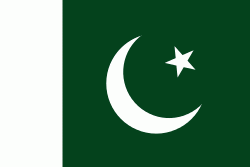Bahawalpur District (Bahāwalpur District)
Located in the south of the Punjab province, Bahawalpur district is bordered by India to its south and southeast, Bahawalnagar to its northeast, Vehari, Lodhran and Multan to its north, Rahimyar Khan to its west, and Muzaffargarh to its northwest.
In 711 A.D. the various parts of Punjab and the whole Sindh came under the Arab rule when Muhammad Bin Qasim conquered Sindh, Multan and surrounding areas of Shorkot. The region came securely under the control of the Umayyad Caliphate. The tribes known as Arain in the region sometimes claim descent from the Arab soldiers who accompanied Muhammad Bin Qasim.
Sultan Mahmud Ghaznavi took over the region in 997 C.E. for the Ghaznavid dynasty empire established by his father, Sultan Sebuktegin. He conquered the Shahis in Kabul in 1005 and followed it by the conquest of Punjab. The Delhi Sultanate and later Mughal Empire ruled the region. The Punjab region became predominantly Muslim due to missionary Sufi saints whose dargahs dot the landscape of Punjab. During the period of British rule, Bahawalpur District increased in population and importance.
The district capital Bahawalpur, which lies just south of the Sutlej River, was founded in 1748 by Muhammad Bahawal Khan and was incorporated as a municipality in 1874. After the decline of the Mughal Empire, the Sikh Empire invaded some towns of modern Pakistan's Punjab province but Bahawalpur had a stronghold of the state's Abbasi nawabs in the city management and the town was free of Sikh Empire. In 1836 Bahawalpur stopped paying tribute to Sikh empire. The state's army had defend the territory and openly declared independence. The founder of the State of Bahawalpur was Nawab Bahawal Khan Abbasi I. The Abbasi family ruled over the State for more than 200 years (1748 to 1954). During the rule of the last Nawab Sir Sadiq Muhammad Khan Abbasi V, Bahawalpur State was merged with Pakistan. During the 1960s (1954) the Nawab agreed (Agreement dated 3 October 1947) for Bahawalpur to be absorbed into modern Pakistan. He was however given special privileges including the right to import several cars duty-free each year. Bahawalpur was formerly the capital of the state and now is the District and Divisional Headquarters of Bahawalpur Division.
The Nawabs of Bahawalpur originally came from Sindh and claimed descent from the Abbasid caliph of Baghdad; they formed a princely state and assumed independence in 1802.
The predominantly Muslim population supported Muslim League and Pakistan Movement. After the independence of Pakistan in 1947, the minority Hindus and Sikhs migrated to India while the Muslim refugees from India settled in Bahawalpur District.
Map - Bahawalpur District (Bahāwalpur District)
Map
Country - Pakistan
 |
 |
| Flag of Pakistan | |
Pakistan is the site of several ancient cultures, including the 8,500-year-old Neolithic site of Mehrgarh in Balochistan, the Indus Valley civilisation of the Bronze Age, the most extensive of the civilisations of the Afro-Eurasia, and the ancient Gandhara civilization. The region that comprises the modern state of Pakistan was the realm of multiple empires and dynasties, including the Achaemenid; briefly that of Alexander the Great; the Seleucid, the Maurya, the Kushan, the Gupta; the Umayyad Caliphate in its southern regions, the Hindu Shahis, the Ghaznavids, the Delhi Sultanate, the Mughals, the Durranis, the Omani Empire, the Sikh Empire, British East India Company rule, and most recently, the British Indian Empire from 1858 to 1947.
Currency / Language
| ISO | Currency | Symbol | Significant figures |
|---|---|---|---|
| PKR | Pakistani rupee | ₨ | 2 |
| ISO | Language |
|---|---|
| EN | English language |
| PA | Panjabi language |
| PS | Pashto language |
| SD | Sindhi language |
| UR | Urdu |















